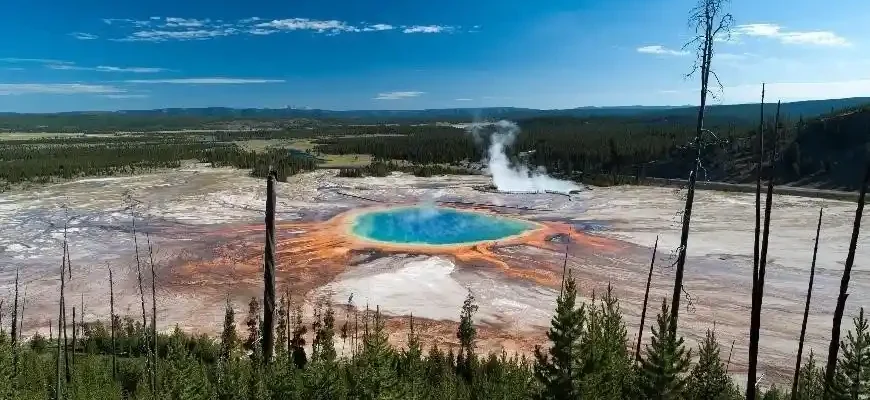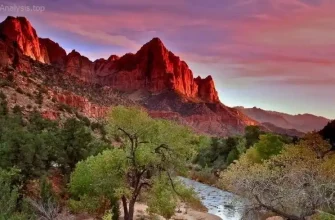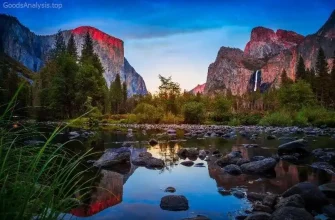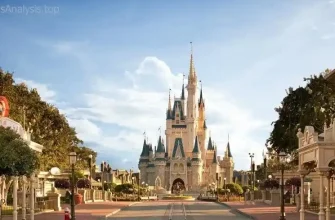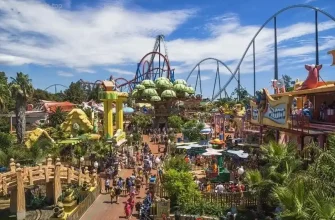Yellowstone National Park, the world’s first national park, is a vast natural wonderland nestled across Wyoming, Montana, and Idaho. Known for its geothermal marvels, abundant wildlife, and stunning landscapes, this UNESCO World Heritage site attracts millions of visitors each year. Whether you’re drawn by the promise of active geysers, the chance to see bison roaming freely, or the allure of dramatic canyons and waterfalls, Yellowstone offers a unique and unforgettable experience. Here’s your ultimate guide to exploring this iconic American treasure.
1. What Makes Yellowstone National Park Special?
Yellowstone’s allure is multi-faceted, with its geothermal features, abundant wildlife, and breathtaking landscapes making it a standout destination. Here’s why Yellowstone is so special:
- Geothermal Wonders: Yellowstone is home to over half of the world’s geothermal features, including more than 10,000 hot springs, geysers, mud pots, and fumaroles. The park’s most famous feature is Old Faithful, a geyser that erupts like clockwork approximately every 90 minutes, sending water 100-180 feet into the air. Other notable geysers like Grand Prismatic Spring, the largest hot spring in the U.S., and Steamboat Geyser, the world’s tallest active geyser, captivate visitors with their surreal beauty.
- Wildlife Haven: The park is a living testament to the diversity of North American wildlife. It’s home to a wide array of animals, including bison, elk, wolves, grizzly bears, and bald eagles. The Lamar Valley and Hayden Valley are prime spots for wildlife viewing, offering excellent opportunities to see these creatures in their natural habitat.
- Stunning Landscapes: From the majestic Yellowstone Lake (the largest high-elevation lake in North America) to the rugged Grand Canyon of the Yellowstone, with its striking yellow-hued cliffs and the breathtaking Lower Falls, the park offers an ever-changing tableau of dramatic views.
- Historical Significance: Yellowstone sits atop a volcanic hotspot, which fuels its geothermal activity. The park’s unique geology, rich in volcanic history, provides fascinating educational opportunities for visitors interested in the Earth’s dynamic processes.
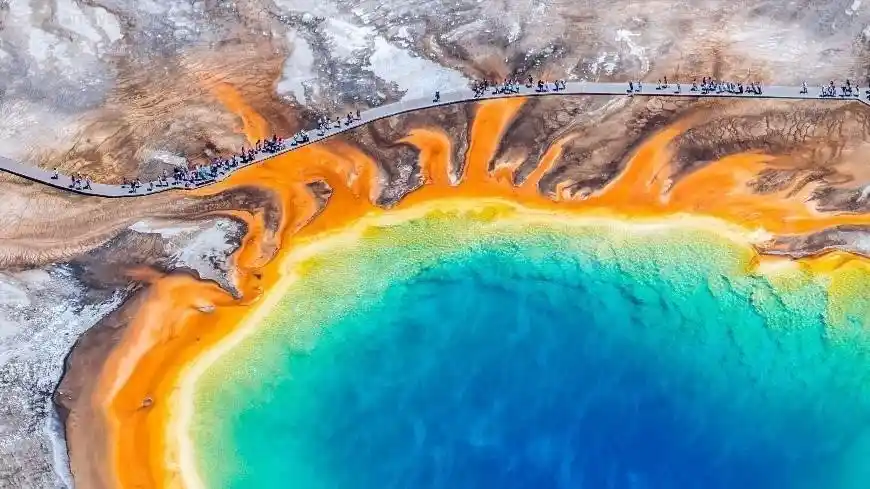
2. Visitor Tips & Practical Information
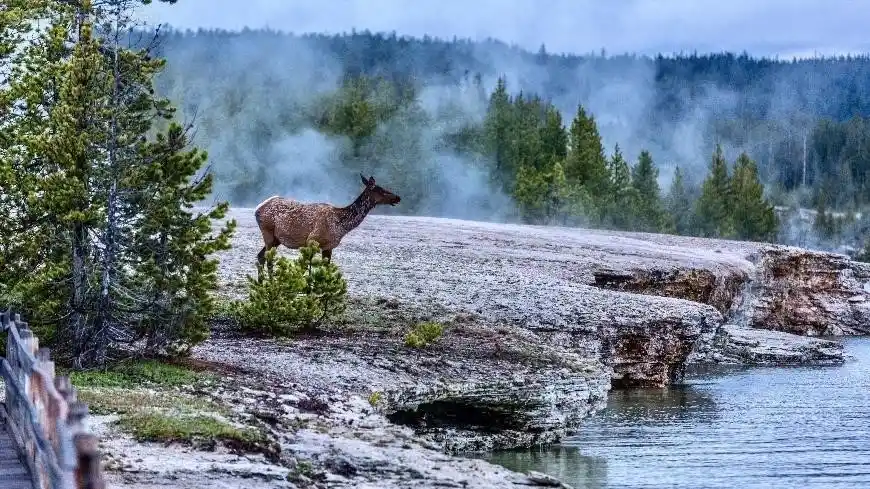
- Best Time to Visit: The ideal time to visit depends on what you want to see. Summer (June to August) offers warm weather and the fullest range of activities but also brings large crowds. Fall (September to early October) is a fantastic time for wildlife viewing, with elk rutting season and fewer visitors. Spring (April to May) is great for seeing newborn animals, though some roads may still be closed due to snow. Winter (November to March) is perfect for solitude and winter sports like cross-country skiing, but many roads and facilities are closed.
- Operating Hours: Yellowstone is open year-round, but many roads and accommodations only operate seasonally. The main visitor centers (such as at Old Faithful, Mammoth Hot Springs, and Canyon Village) are open year-round, but certain areas may close due to weather conditions or park maintenance.
- Ticket Prices: As of 2024, the entrance fee for a private vehicle is $35 for a 7-day pass. For those planning to visit multiple national parks, an America the Beautiful Pass ($80) grants access to all national parks for a year.
- Accessibility: Yellowstone is relatively accessible for all types of travelers, though it is important to note that some of the park’s more rugged areas may require a bit of hiking or off-road driving. Many of the main attractions are accessible by car, and the park has a number of accessible facilities, including boardwalks and viewing platforms. Accessible restrooms are located throughout the park, and there are plenty of accessible trails.

3. History and Cultural Significance
Yellowstone has a rich history that stretches back thousands of years. Indigenous peoples, including the Shoshone, Crow, Blackfeet, and Nez Perce, have long considered the park’s lands sacred and central to their way of life. The area’s geothermal features were of particular cultural significance.
The park’s modern history began in the 19th century, when it was first explored by expeditions such as the Cook–Folsom–Peterson Expedition in 1869. Following these explorations, Yellowstone was designated as the first national park in the world by President Ulysses S. Grant in 1872, marking a turning point in conservation history. It was created not only to preserve its natural beauty but also to protect its geothermal features, which were threatened by unsustainable use by early settlers.
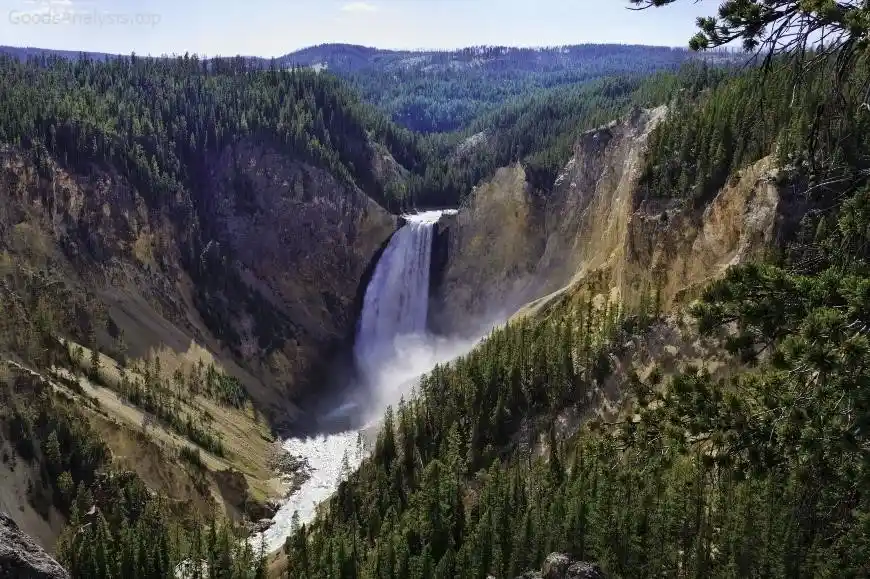
Since its creation, Yellowstone has been central to the national parks movement and a model for preserving natural landscapes for future generations. Today, it is managed by the National Park Service.
4. What to Expect When You Visit Yellowstone
Visiting Yellowstone is an immersive experience, where the natural world takes center stage. The park’s atmosphere is both serene and awe-inspiring, offering visitors a break from modern life. The steady rhythm of geysers erupting, the cry of a wolf in the distance, and the splendor of the park’s landscapes evoke a sense of timelessness.
- Geysers and Hot Springs: Expect to see eruptions, hear the hiss of steam, and feel the warmth of geothermal waters. The park is best known for its geothermal features, so make sure to stop at Old Faithful, the Grand Prismatic Spring, and Norris Geyser Basin.
- Wildlife Viewing: If you’re lucky, you’ll witness the sight of bison roaming the plains or elk grazing by a river. Be prepared to stop for animal sightings, as the park’s wildlife often appears unexpectedly, even close to the roads.
- Hiking and Scenic Drives: The park offers a variety of hiking trails, ranging from easy walks to more challenging backcountry routes. Some of the most popular hikes include the South Rim Trail around the Grand Canyon of the Yellowstone and the Mount Washburn trail. The Grand Loop Road is a scenic drive that connects the park’s major attractions and provides access to many of the park’s highlights.
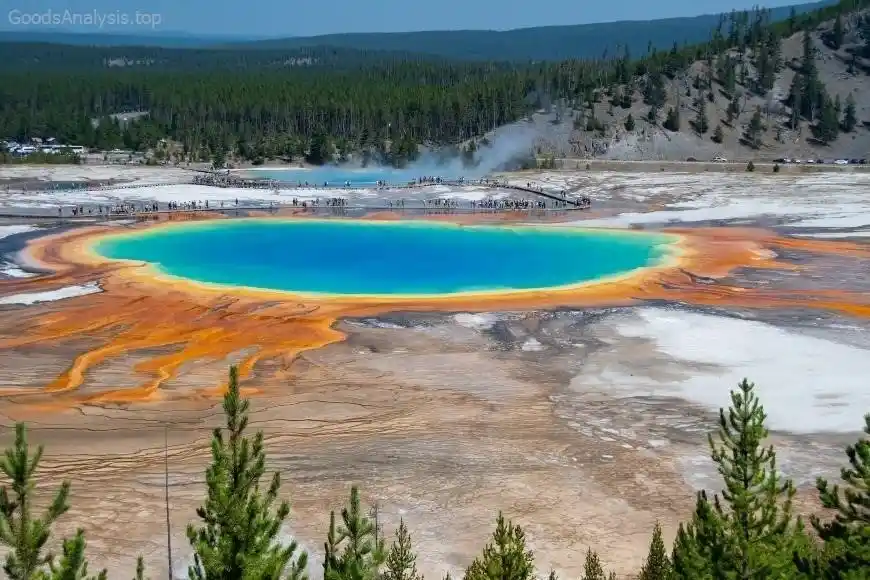
5. Nearby Attractions and Dining Options
- Grand Teton National Park: Located just south of Yellowstone, Grand Teton National Park is another must-see. The jagged peaks of the Teton Range provide stunning views and excellent opportunities for hiking, photography, and wildlife watching.
- Lamar Valley: Often referred to as the “Serengeti of North America,” Lamar Valley is a prime location for wildlife viewing. You can expect to see bison, wolves, and perhaps even a grizzly bear.
- Dining: Dining options within the park vary from casual eateries to more refined experiences. The Old Faithful Inn Dining Room offers a grand, historic atmosphere with classic American dishes. The Lake Yellowstone Hotel Dining Room provides sweeping views of Yellowstone Lake and an elegant setting for a meal. For more casual dining, try the Mammoth Hot Springs Terrace Grill.
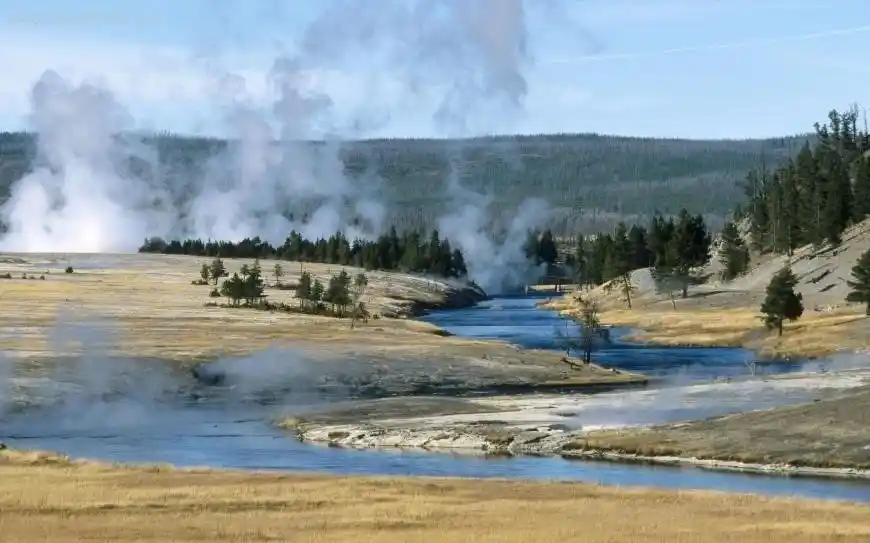
6. Family-Friendly and Group Travel Tips
- Families: Yellowstone is an ideal destination for families, offering opportunities for both adventure and education. The park’s Junior Ranger Program is a fantastic way for children to engage with the park’s history and nature. The easy-to-navigate boardwalks, particularly around the geysers, are perfect for young children, and there are also family-friendly hikes such as the Fairy Falls Trail.
- Groups: If you’re traveling in a group, consider taking a guided tour. Many local companies offer day trips around the park, including bus tours that allow everyone to relax while an expert guides you through the park’s highlights.
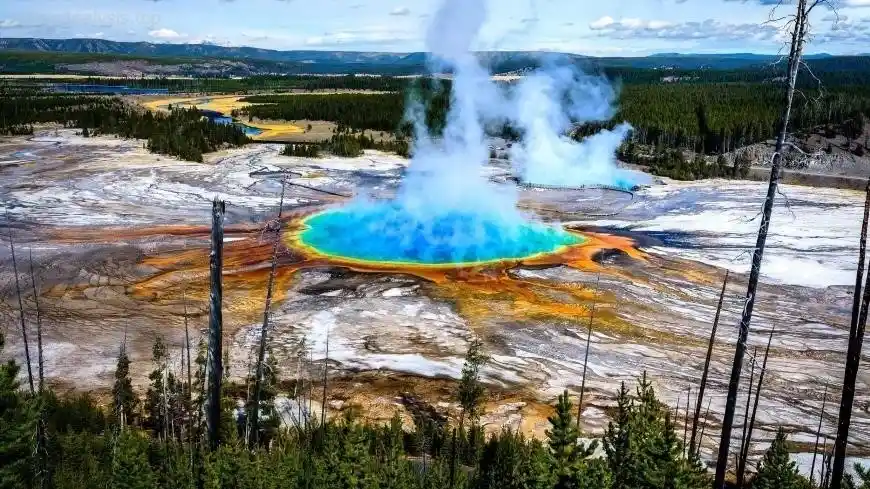
7. Instagrammable Moments and Photo Opportunities
Yellowstone is a photographer’s dream. Here are some of the best spots to capture Instagram-worthy photos:
- Grand Prismatic Spring: The vibrant colors of this geothermal wonder are nothing short of spectacular. The best aerial shots are taken from the Fairy Falls Trail.
- Old Faithful: A must-capture moment is Old Faithful erupting against the backdrop of the vast Yellowstone landscape.
- Grand Canyon of the Yellowstone: The Lower Falls is one of the most iconic natural landmarks in the U.S. for photography.
- Bison in Lamar Valley: The valley’s bison herds against the backdrop of the wild landscape provide classic wildlife shots.
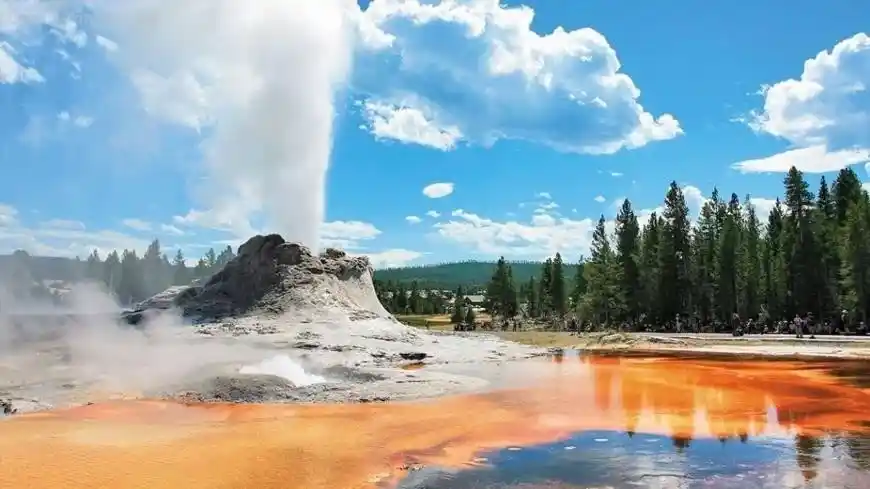
8. Travel Tips and Transportation
- How to Get There: Yellowstone has five entrance stations: North (Gardiner, MT), Northeast (Silver Gate, MT), East (Cody, WY), South (Jackson, WY), and West (West Yellowstone, MT). The closest major airports are in Bozeman, MT, Jackson Hole, WY, and Idaho Falls, ID.
- Transportation: While you can rent a car to explore the park at your own pace, guided tours are available if you prefer a more structured experience. Note that some areas, particularly in the winter, may require a high-clearance vehicle, and road closures due to snow or maintenance can be common.
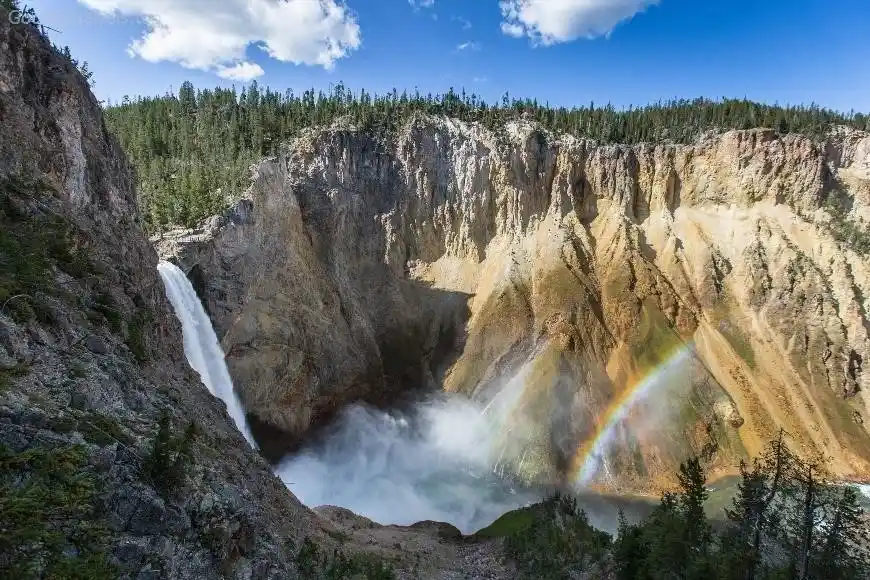
9. Safety and Etiquette Tips
- Stay Safe: Wildlife in Yellowstone can be dangerous. Always keep a safe distance—at least 100 yards from bears and wolves and 25 yards from other animals like bison and elk.
- Follow the Rules: Stay on marked trails, respect the park’s quiet zones, and never approach or feed wildlife. Be mindful of the environment and follow Leave No Trace principles.

